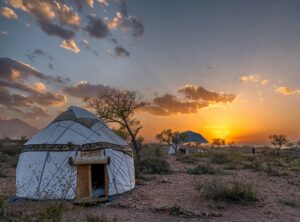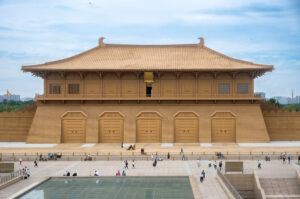Nestled in the heart of Central Asia, Kyrgyzstan is a lesser-known destination yet irresistibly captivating for those seeking a pristine journey. This small country is blessed with the majestic Tien Shan mountains, vast steppes, and the deep blue Issyk-Kul Lake – often called the ‘Jewel of the Mountains.’
Traveling through Kyrgyzstan, you’ll encounter a slow, unhurried pace of life, where people still maintain the nomadic traditions of centuries past. White, round yurts dot the steppes, horses gallop freely under the setting sun, and the komuz’s melodies drift on the wind – all evoking a vivid memory of a culture deeply connected to nature.
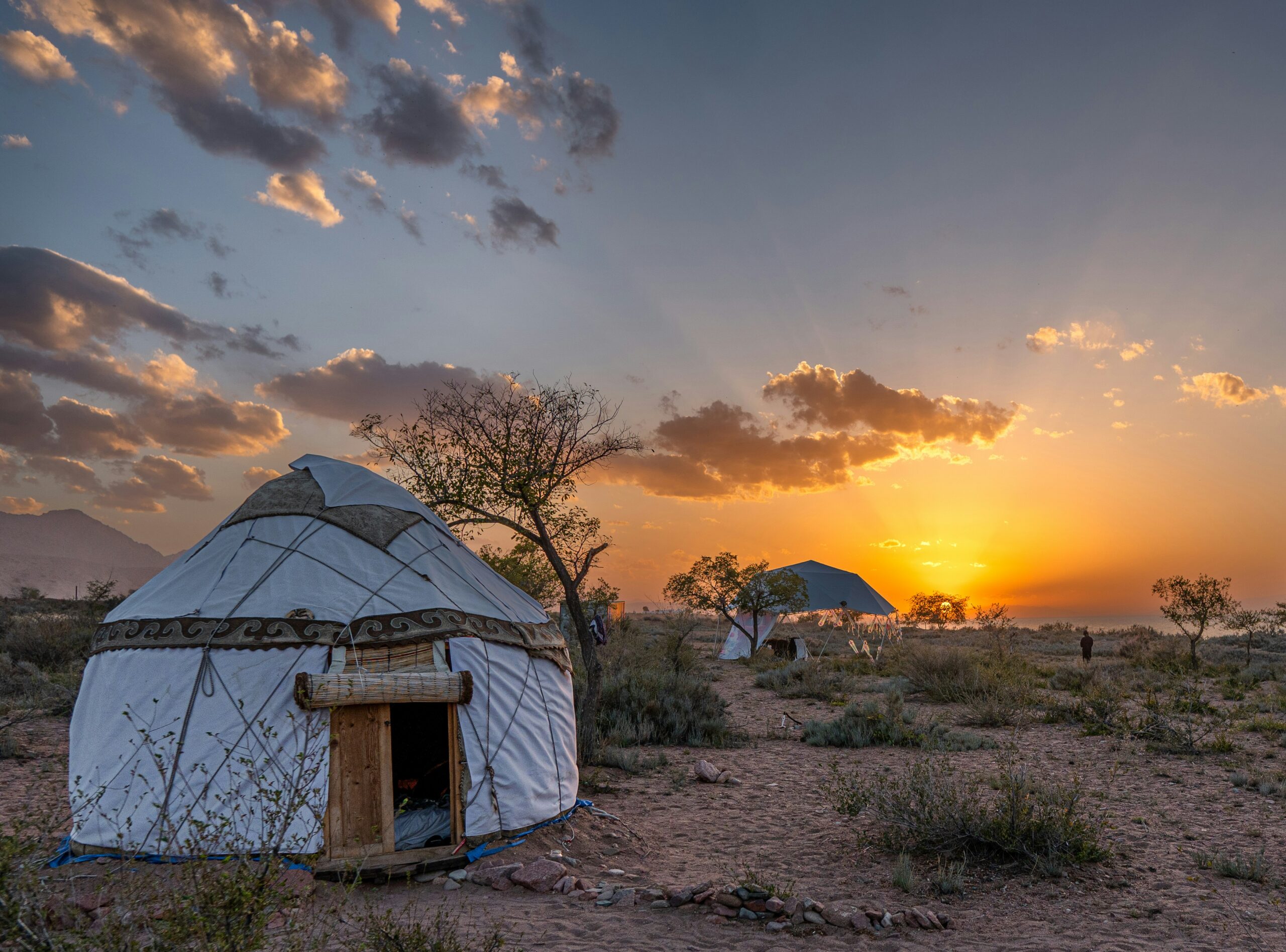
Getting There
Manas International Airport (FRU) in Bishkek is the main gateway, with direct flights from major cities in Central Asia, Russia, Turkey, and some European destinations. The airport is about 30 km from the city center, taking around 40 – 50 minutes by taxi or airport shuttle.
Currently, there are no direct flights from Vietnam to Kyrgyzstan. Travelers need at least one stopover. Some airlines that commonly connect to Bishkek include:
– Turkish Airlines: flights from Hanoi or Ho Chi Minh City to Bishkek via Istanbul.
– Qatar Airways: flights from Hanoi or Ho Chi Minh City to Bishkek via Doha.
– Aeroflot: flights from Hanoi or Ho Chi Minh City to Bishkek via Moscow.
– China Southern Airlines: flights from Hanoi or Ho Chi Minh City to Bishkek via Urumqi.
The Stay
Hyatt Regency Bishkek
The first international 5-star hotel in Kyrgyzstan, Hyatt Regency Bishkek is located in the heart of the capital, offering easy access to cultural and commercial hubs. Its modern spaces are complemented by views of the majestic Tien Shan mountains.

Sheraton Bishkek
Famous for its rooftop bar overlooking the city and mountains, Sheraton Bishkek offers a vibrant and contemporary atmosphere. It’s ideal for those who want to experience the capital’s energy from above, in a youthful and open setting.

Jannat Regency
Jannat Regency combines luxury with the warm, welcoming feel of home. With its elegant and friendly design, the hotel provides a balanced retreat between modern comforts and local charm. It’s a perfect choice for travelers seeking privacy and relaxation while enjoying international-standard hospitality in Bishkek.

For nature lovers and those who want to get close to the wild, camping is an ideal option when traveling in Kyrgyzstan. Some recommended areas include:
– Song-Kul Lake
– Ala-Kul Lake
– Tien Shan Mountains
– Issyk-Kul Lake
You should also try these unique types of accommodation:
Homestay: Whether in a remote village or a popular tourist spot, Kyrgyzstan offers cozy homestays for foreign visitors, often beautifully decorated with local cultural touches.
Yurt: The yurt is a traditional round tent used by nomads in Central Asia and Mongolia. Built with a wooden or metal frame and covered with thick fabric or felt, yurts are warm, comfortable, and full of authentic nomadic charm.
Best Time to Visit
– Winter (January – March): During this period, temperatures in Kyrgyzstan drop significantly, sometimes reaching as low as -40°C, making it perfect for outdoor skiing and snow activities. However, heavy snowfall and extreme cold can block mountain routes, limiting access to many areas.
– Spring (April – June): As nature awakens from its winter slumber, you’ll witness locals working in the fields and mountain trails reopening. Temperatures gradually rise but remain unstable, ranging from -5°C to 25°C, with frequent rain.
– Summer (July – September): This is ideal for outdoor activities, with temperatures around 27°C. It’s also the season of abundant fruit and the peak of tourism in Kyrgyzstan.
– Autumn (October – December): Temperatures drop but rarely fall below -10°C. The weather is dry and pleasant, with vibrant autumn colors – perfect for sightseeing, photography, or leisurely walks through valleys and highlands.
Things To Do
With three UNESCO World Heritage sites – Sulaiman-Too Sacred Mountain, Sary-Chelek Lake, and Gumbez of Manas – the majestic landscapes of the Tien Shan mountains, and lying along the historic Silk Road, Kyrgyzstan offers a timeless experience. The aroma of freshly baked bread by nomadic campfires and the warmth of their traditions capture a country where history and adventure intertwine across the centuries.
Sulaiman-Too Sacred Mountain
Also known as the Sulayman Throne, meaning the “Crown of Solomon,” Sulaiman-Too is a sacred mountain in Kyrgyzstan. Some geographers and historians believe it corresponds to the ancient landmark called the Stone Tower, mentioned by Claudius Ptolemaeus in his work Geography. It served as a key marker along the ancient Silk Road, the overland trade route connecting Europe and Asia.
The site remains popular with local Muslims, featuring a staircase leading to the summit where a small mosque, originally built by Babur in 1510, still stands. Most of the mosque was rebuilt in the late 20th century. UNESCO recognizes Sulaiman-Too as a World Heritage Site, representing the most complete example of a sacred mountain in Central Asia, venerated for millennia.
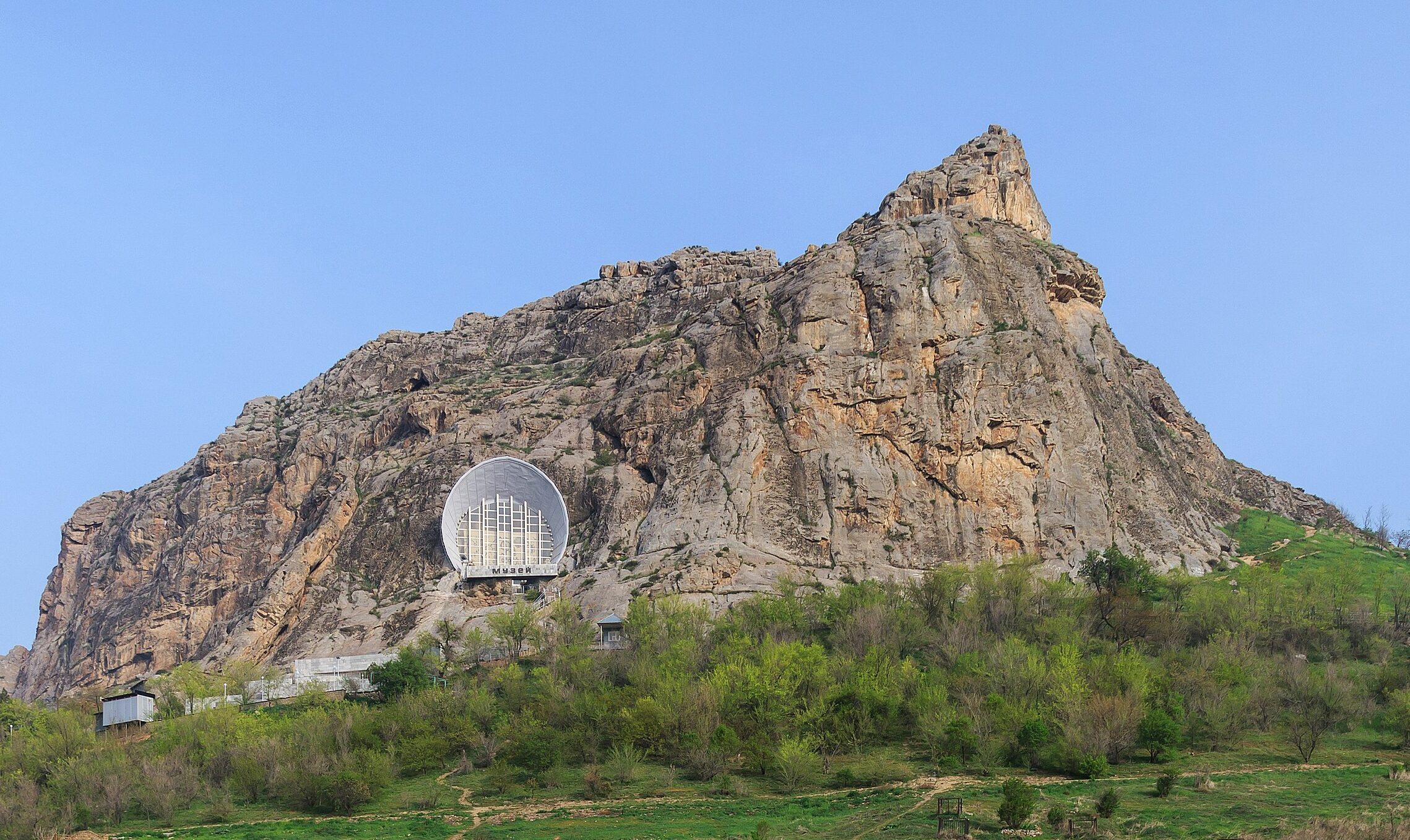
Issyk-Kul Lake
Issyk-Kul is the seventh deepest lake in the world, the tenth largest by volume, and the second-largest saline lake after the Caspian Sea. Surrounded by snow-capped mountains, it never freezes, which is why its name in Kyrgyz means “warm lake.” The lake is a globally significant Ramsar biodiversity site, part of the Issyk-Kul Biosphere Reserve, and contains traces of a 2,500-year-old ancient settlement currently under archaeological excavation.
Situated along the Silk Road, the overland trade route connecting the Far East and Europe, Issyk-Kul was visited by the famous Chinese monk and scholar Xuanzang, who recorded details of the lake in his 7th-century work Great Tang Records on the Western Regions. Historically, the lake and its surrounding territory were once under the Qing Dynasty of China before being ceded to Russia under the Treaty of Tarbagatai.
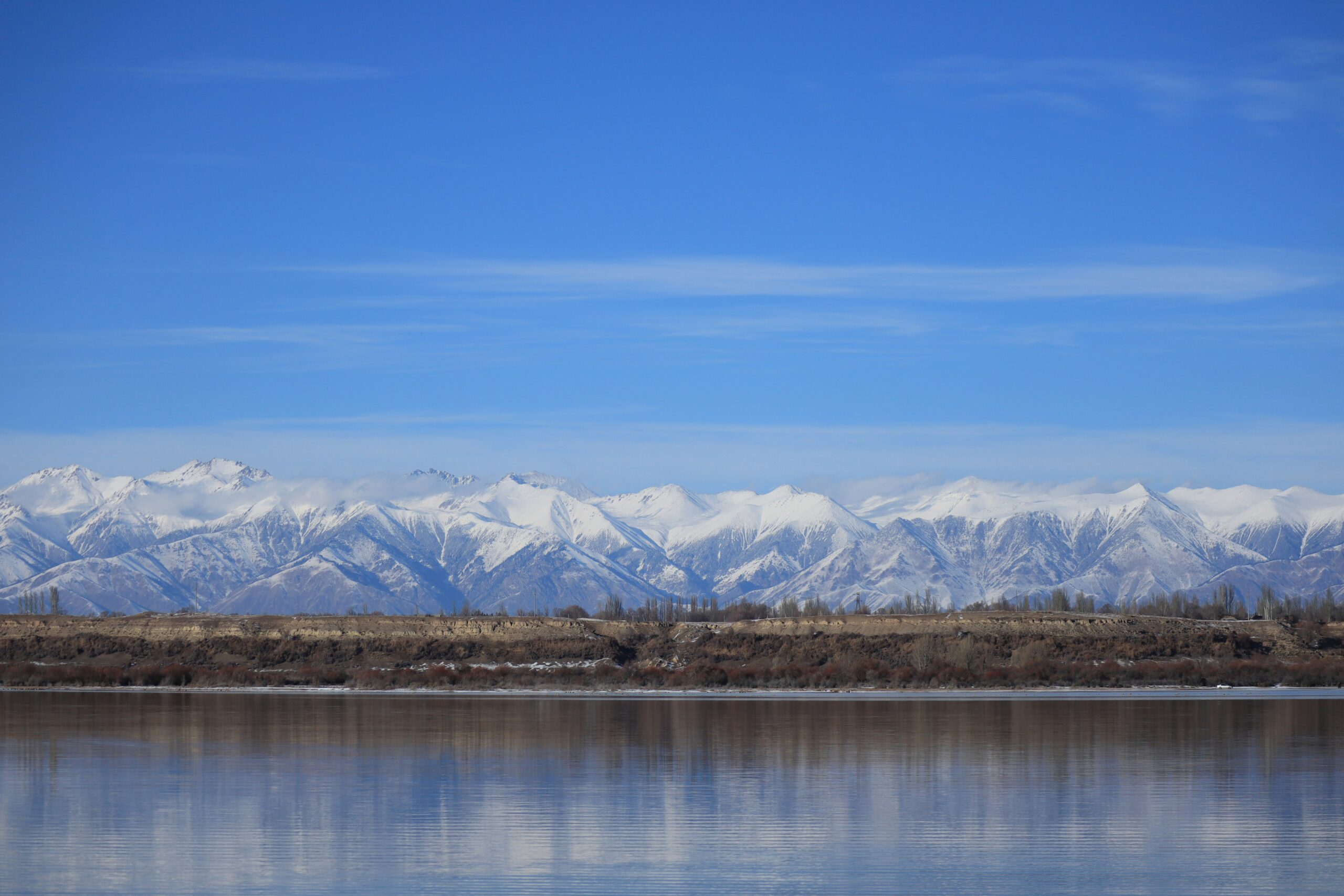
Ala-Archa Gorge
Ala-Archa National Park is a protected area in the high Tien Shan mountains of Kyrgyzstan, covering 16,485 hectares. In Kyrgyz culture, the Archa tree (a type of juniper) is highly valued for its bright or multicolored foliage. Traditionally, smoke from burning archa wood is used to ward off evil spirits. However, it is believed that planting an Archa tree too close to a home can gradually drain the energy of its inhabitants.
Visitors to Ala-Archa National Park can enjoy a variety of outdoor activities, including hiking, mountain climbing, and skiing, etc
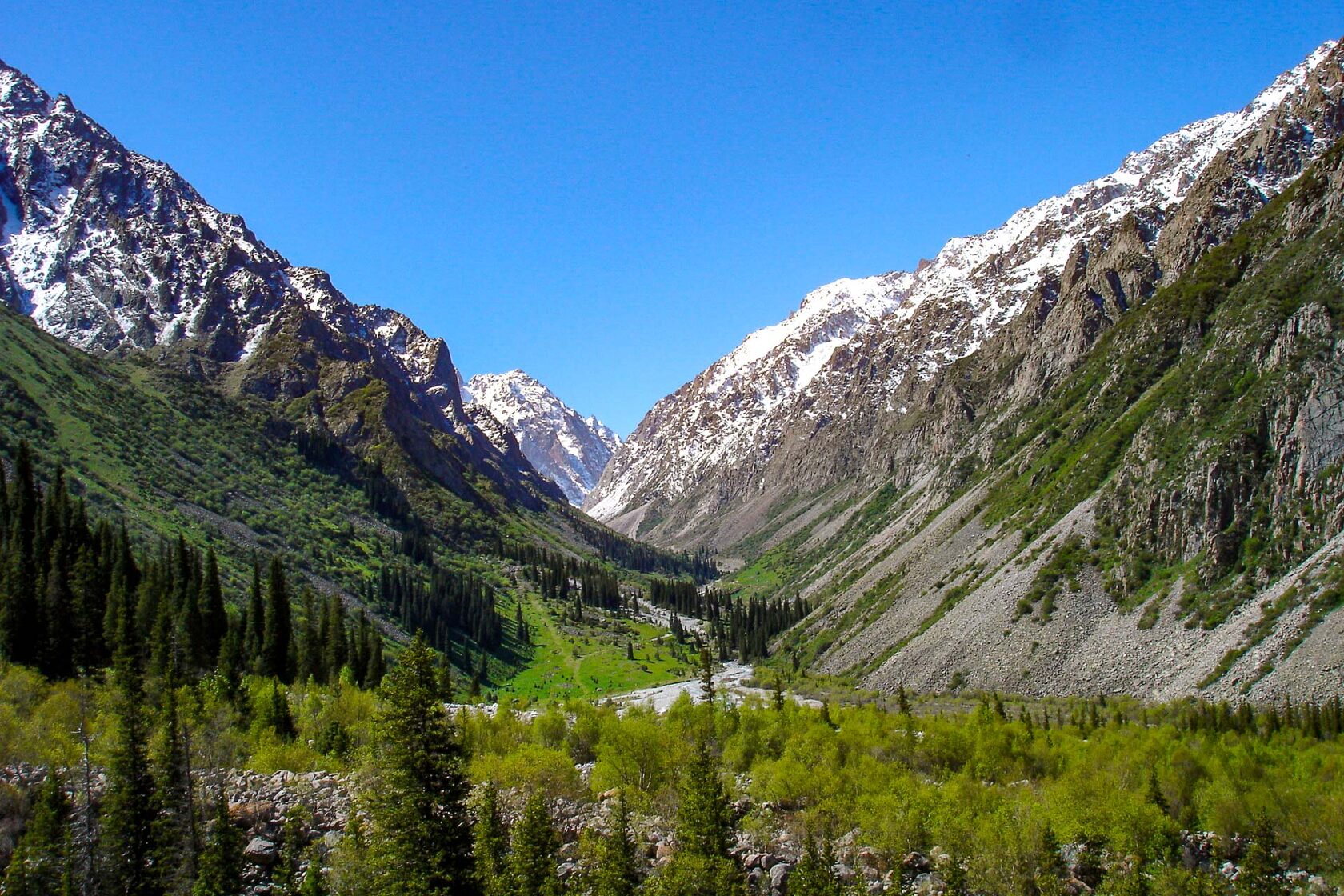
Altyn Arashan
Altyn Arashan is a resort located in a valley near Karakol and Issyk-Kul Lake. The resort features several wooden lodges with natural sulfur hot springs used for therapeutic purposes. It lies within the Arashan Nature Reserve, home to around 20 snow leopards and a number of bear species.
Visitors to the Altyn Arashan village can experience all four seasons in a single day: cool spring-like breezes in the morning, intense summer sun at noon, golden autumn light in the afternoon, and freezing winter temperatures at night.
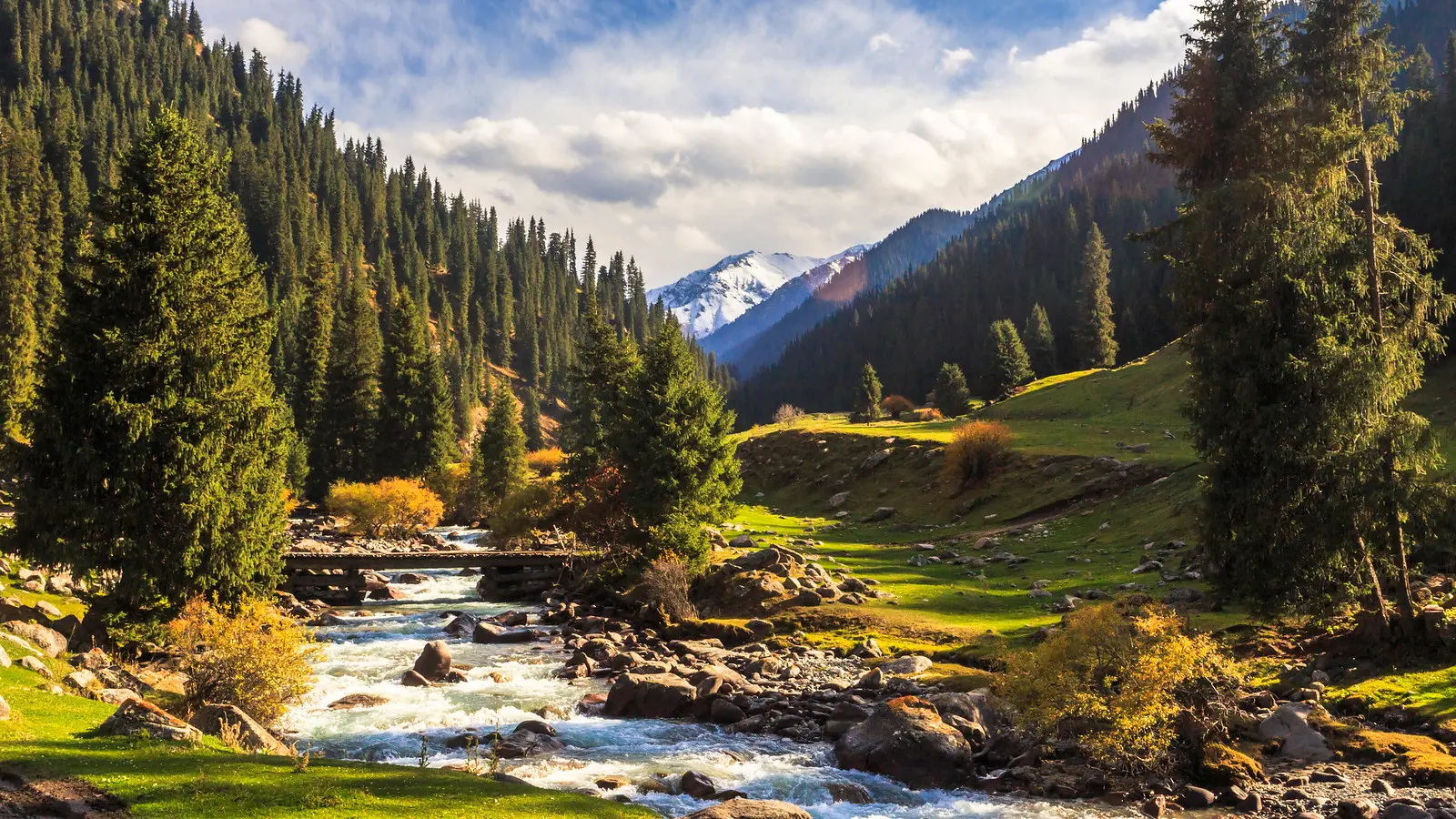
Ruh Ordo Cultural Center
At Ruh Ordo, visitors can explore sculptures and portraits of notable figures who have left a mark on human history. The center also houses places of worship for Buddhism, Catholicism, Orthodoxy, Islam, and Judaism side by side, symbolizing the unity of faiths across the world.
The name Ruh Ordo means “spiritual center” in Kyrgyz. It is a unique place where a peaceful atmosphere allows visitors to escape the daily hustle and bustle and take a brief journey into a world of beauty and spirituality.
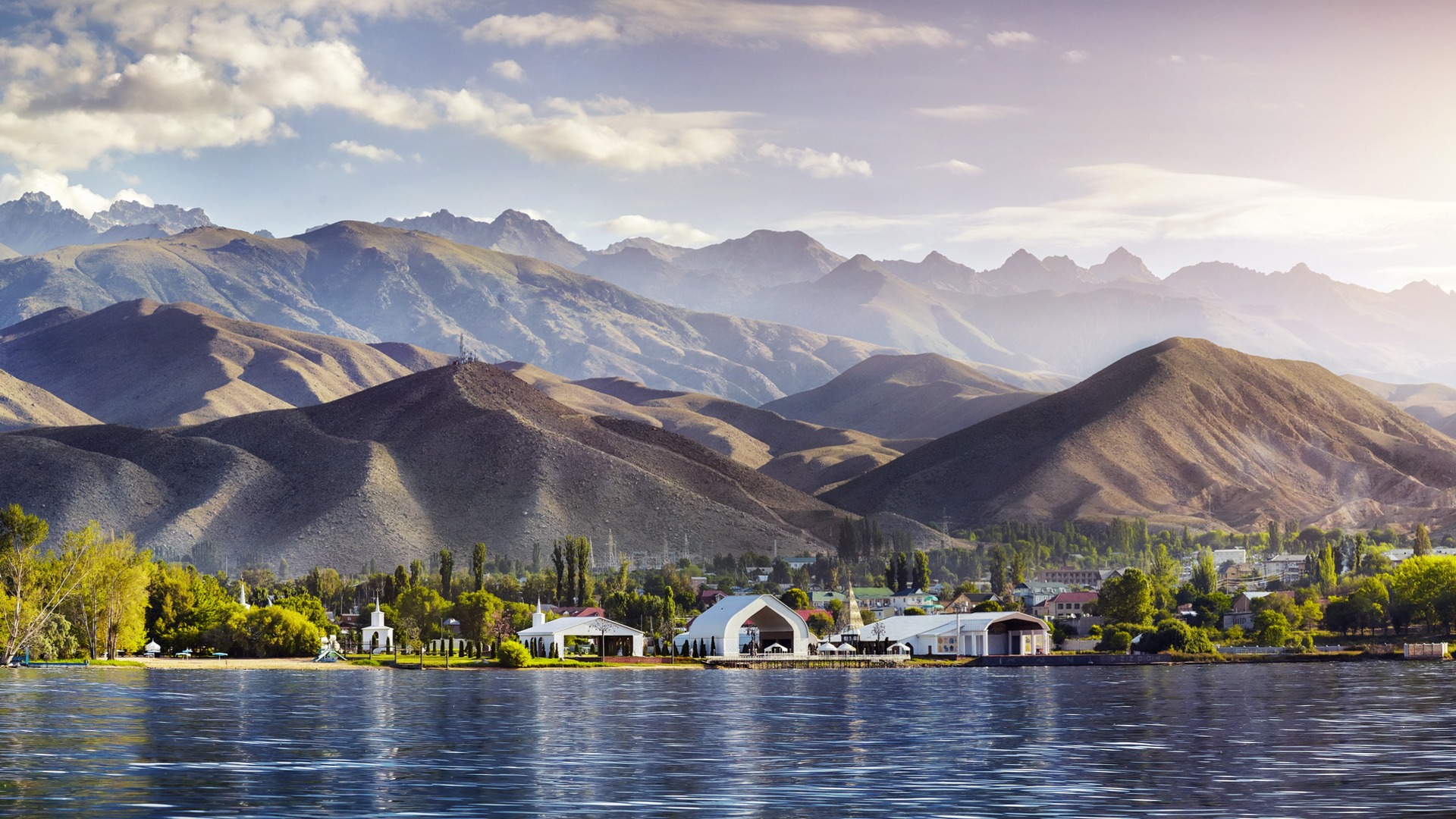
Holy Trinity Orthodox Church
One of Kyrgyzstan’s notable tourist attractions is the Holy Trinity Orthodox Church in Karakol. It stands as a remarkable example of both architectural beauty and the historical journey of the local faith community. The church’s origins date back to 1869, when Karakol was a small garrison town at the edge of the Russian Empire under the Tsar. A chapel was established in the town center to serve the Cossacks and the stationed expeditionary troops.
Inside, the church preserves a sacred icon: the Tikhvin Icon of the Mother of God, revered and protected as a valuable cultural treasure.
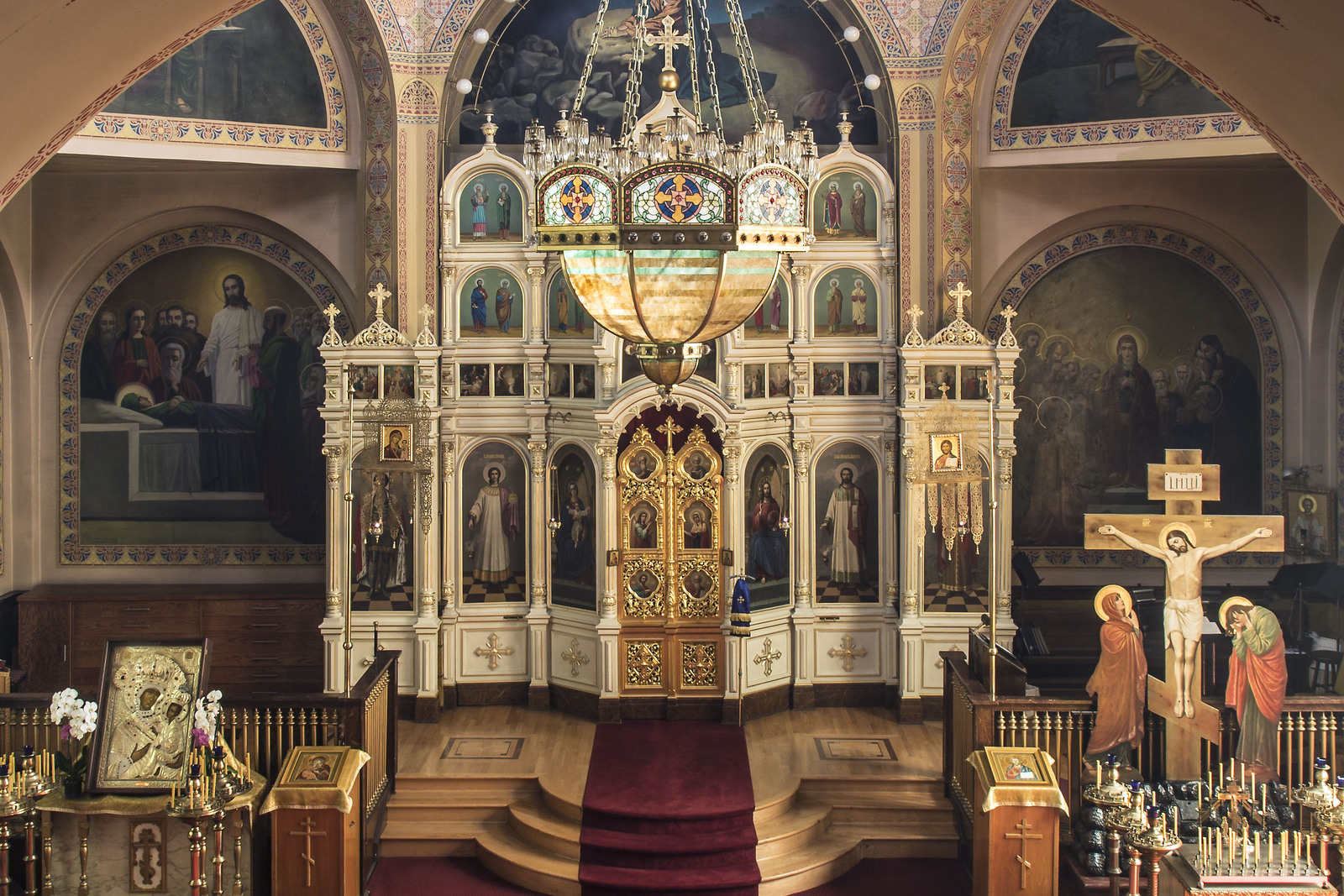
Savoring Kyrgyzstan
– Shashlik: Skewered and grilled meats, including lamb, beef, veal, poultry, venison, or rabbit, marinated with spices and vegetables such as tomatoes, eggplants, and carrots.
– Manti: Steamed dumplings filled with meat or vegetables.
– Lagman: Fresh golden noodles cooked with lamb, potatoes, and vegetables.
– Kymyz/Kimus: Fermented mare’s milk.
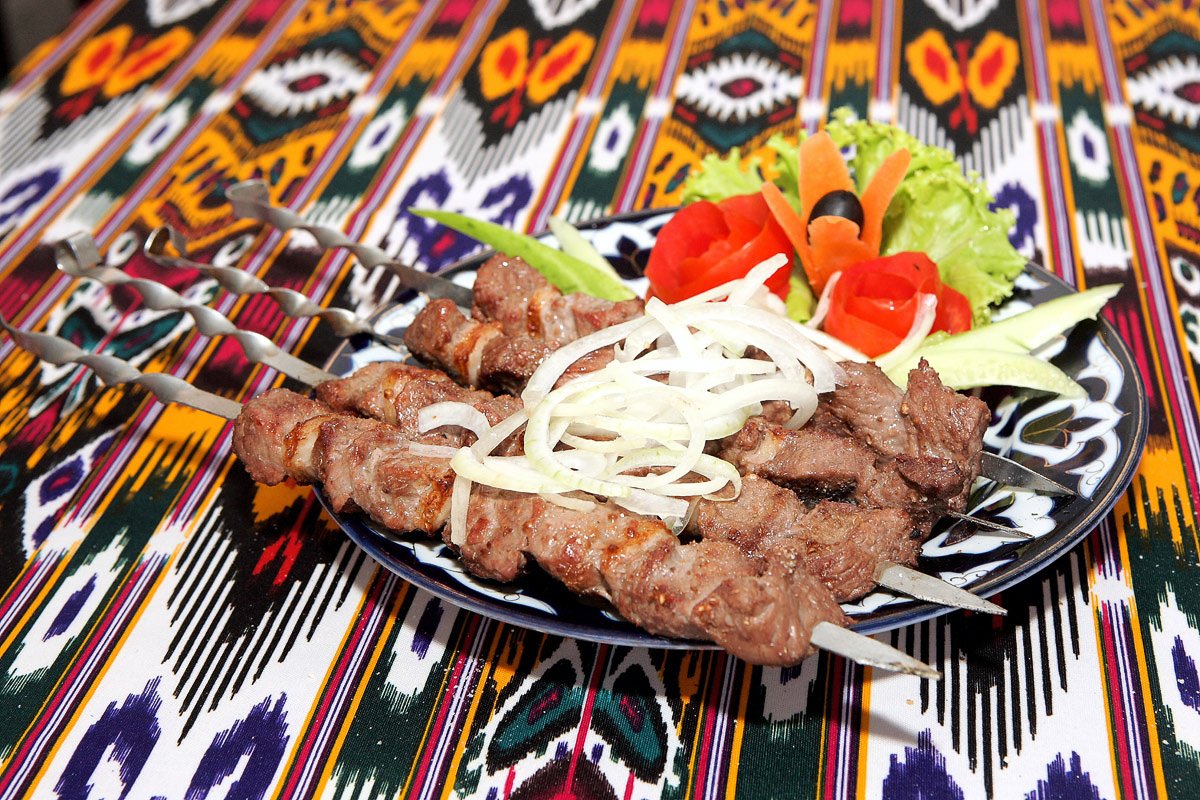
Kyrgyzstan is neither noisy nor overly familiar, but it is precisely this untouched quality that makes it a truly special journey. In this land, travelers can slow down, tune into the rhythm of nature, and feel the freedom of the vast steppes.
Join Demen Travel on a journey to rediscover the marks of time and unforgettable moments amid the mountains of Central Asia.

